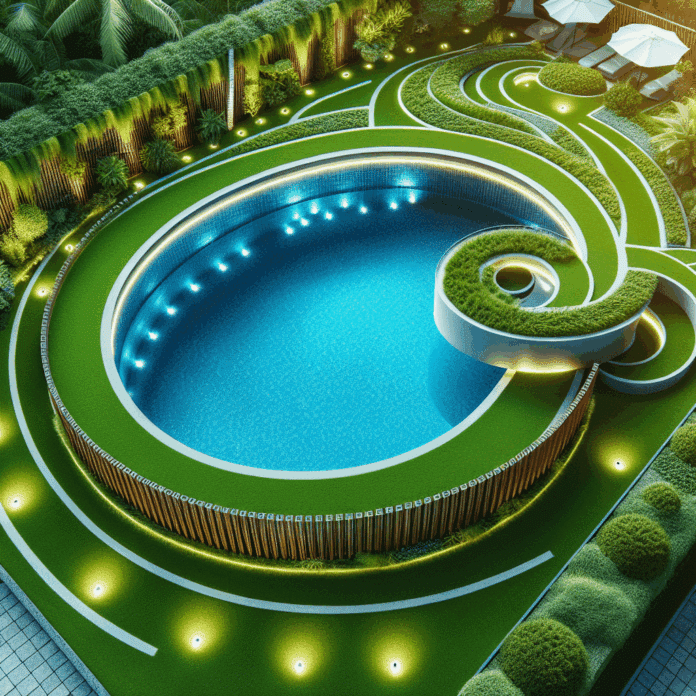In recent years, the use of synthetic turf has gained popularity as a versatile and aesthetically pleasing solution for various outdoor areas, standing out particularly in the areas surrounding swimming pools. As more homeowners seek low-maintenance options and an always-green appearance, artificial turf emerges as the ideal option.
One of the main advantages of synthetic grass is its water resistance and its efficient drainage capacity. Unlike natural grass, which can become muddy after a dip, artificial turf allows a steady flow of water, keeping the area clean and safe. This feature is especially beneficial for families with young children and pets that enjoy the outdoors, avoiding mud and dirt problems.
From an aesthetic perspective, synthetic grass emulates the appearance of natural grass surprisingly well. Companies have developed varieties that offer different shades and textures of green, blending seamlessly with the pool surroundings. This appearance remains year-round, eliminating concerns about the winter thaw or the summer drought.
Maintenance is another attraction of synthetic turf. Unlike natural grass, which requires regular mowing, watering and fertilization, artificial grass only needs occasional brushing and a hose to clean dust and debris. This represents a significant saving of time and resources, an especially attractive factor in warm climates where irrigation can be costly.
However, the installation of artificial turf can entail a significant initial investment. It is recommended to hire professionals who ensure proper drainage and positioning. In the long term, this investment is offset by the savings in maintenance and the durability of the material, which can last 10 to 15 years with proper care.
The rise in environmental awareness has also influenced the adoption of synthetic turf, since it helps conserve water by eliminating the need for constant irrigation. Although there are criticisms about the sustainability of its manufacturing, many companies are using recycled materials, thereby improving the ecological footprint.
In summary, synthetic grass has become a practical and aesthetic option for areas around swimming pools. With its low maintenance, water resistance, and visual appeal, it has become the preferred choice for those who wish to enjoy a functional and attractive outdoor space year-round.



